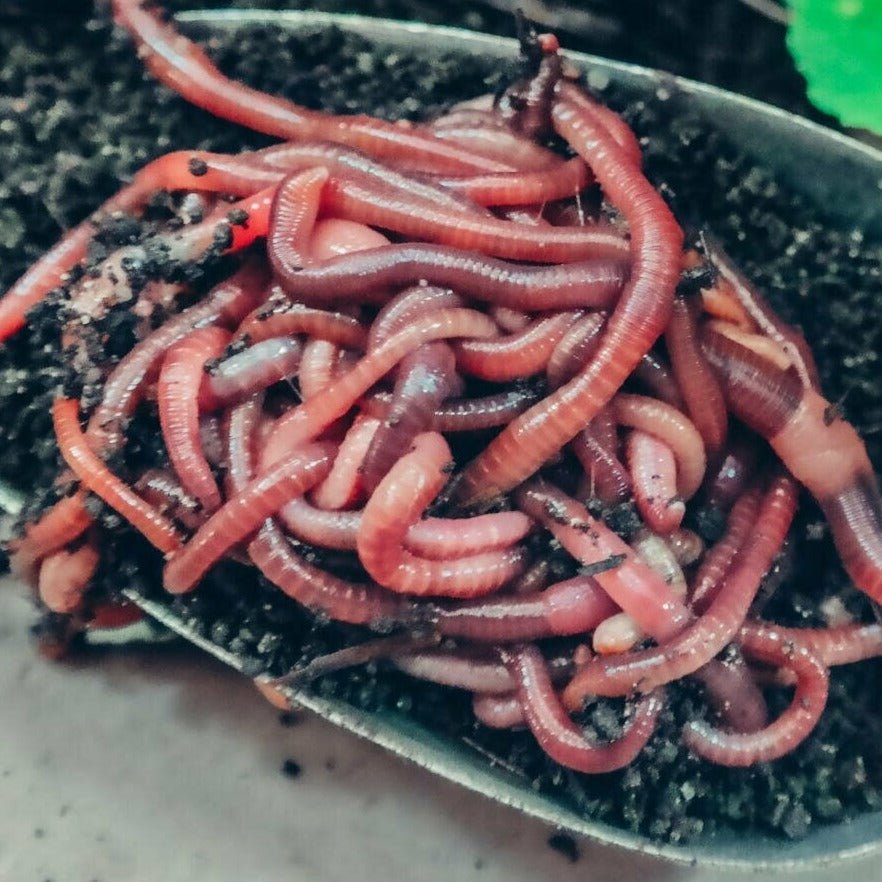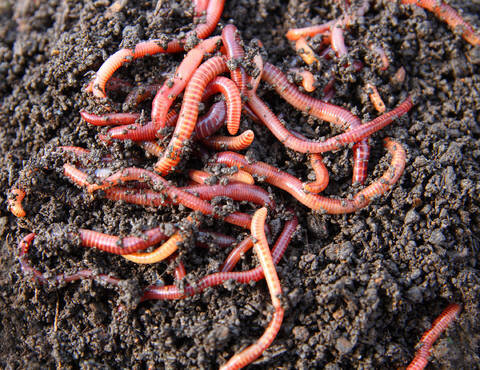Everything You Need to Find Out About Red Wigglers for Composting
Red wigglers, or Eisenia fetida, play a critical role in the realm of composting, transforming organic waste right into valuable soil amendments. Their unique organic characteristics allow them to thrive in different problems, making them an ideal selection for both newbie and seasoned composters alike. Understanding their demands and advantages is essential for developing an efficient vermicomposting system. The procedure of setting up a worm bin and maintaining it can present difficulties. To efficiently harness the possibility of these worms, one need to discover the ins and outs of their care and monitoring.
What Are Red Wigglers?

Belonging To The United States and copyright, red wigglers are surface-dwelling organisms that choose moist, cozy environments rich in disintegrating raw material. Their diet plan is composed primarily of decaying plant material, food scraps, and various other natural debris, which they consume and damage down successfully. As they digest this material, they generate nutrient-rich spreadings that improve soil fertility.
Red wigglers are hermaphroditic, possessing both male and women reproductive body organs, and can duplicate promptly under ideal problems. This ability makes them an optimal option for composting systems, as their populace can enhance quickly. Their resilience and adaptability to numerous environments better solidify their value in lasting waste monitoring methods. Generally, red wigglers are important contributors to the process of reusing natural waste into valuable garden compost.
Benefits of Making Use Of Red Wigglers
Utilizing red wigglers in composting systems provides many benefits that enhance both the effectiveness of waste monitoring and the top quality of the resulting compost. These worms, clinically called Eisenia fetida, are specifically efficient at breaking down natural issue, transforming kitchen area scraps and lawn waste right into nutrient-rich garden compost at an accelerated price.
Among the primary benefits of using red wigglers is their capability to consume large quantities of organic material, commonly refining their weight in food waste daily. This high usage rate causes quicker decay and decreases the quantity of waste sent out to land fills. The spreadings generated by red wigglers are abundant in important nutrients, beneficial microorganisms, and enzymes, making them an exceptional plant food for yards and plants.
Furthermore, red wigglers prosper in a range of atmospheres, making them adaptable for both indoor and outdoor composting systems - red wigglers. Their visibility in a compost bin helps to aerate the product, protecting against odors and advertising a healthy and balanced composting process. Overall, employing red wigglers not just adds to reliable waste monitoring however also sustains lasting gardening methods through the manufacturing of high-grade garden compost
Establishing Up Your Worm Container
To effectively establish a worm container, it is necessary to select a proper container that fulfills the needs of red wigglers while offering a favorable environment for composting. An appropriate container can be made from plastic, timber, or metal, with a capacity of at least 1 square foot for every single extra pound of worms.
Make certain the container has adequate drainage holes to avoid excess wetness, as red wigglers flourish in a damp, however not water logged, setting. red wigglers. The container must additionally be aerated to supply sufficient airflow, preventing anaerobic problems that might hurt the worms
A suitable place for the worm bin is an amazing, dark area, complimentary from direct sunlight and extreme temperature levels, as red wigglers prefer a temperature level series of 55 to 77 degrees Fahrenheit.
Prior to introducing the worms, prepare bed linen products such as shredded paper, cardboard, or coconut coir, which will certainly offer both habitat and food. Moisten the bed linens lightly to create an inviting atmosphere for the worms. Finally, think about putting a lid on the bin to maintain humidity and reduce parasites, while guaranteeing it can be quickly removed for upkeep.
Feeding and Care Guidelines
Feeding red wigglers is an important aspect of preserving a healthy and balanced composting system. These worms grow on a varied diet, primarily composed of organic materials such as vegetables and fruit scraps, coffee premises, and crushed eggshells. It is important to prevent feeding them meat, dairy, and oily foods, as these can produce undesirable smells and attract insects.
When presenting food to your worm container, slice or shred materials into smaller sized pieces to facilitate quicker decay. Start with little quantities to assess the worms' consumption rate, gradually enhancing the amount as they adjust. It is recommended to alternative feeding places within the container to encourage complete mixing and oygenation of the compost.

Troubleshooting Common Issues
Keeping a prospering worm composting system can often provide challenges that require focus and troubleshooting. Usual concerns include an unpleasant smell, which usually shows overfeeding or the presence of anaerobic conditions. To remedy this, lower the quantity of food included and make certain proper oygenation by blending the bed linen material.
One more constant problem is the escape of worms from the container. This can happen due to too much dampness why not look here or inappropriate environmental problems. Frequently check the wetness levels, intending for a damp yet not soggy uniformity, and preserve optimum temperature levels between 60-80 ° F(15-27 ° C )to develop a comfy habitat for your red wigglers.
Insects, such as fruit flies, can additionally attack worm bins. red wigglers. To combat this, cover food scraps with a layer of bed linen or shredded paper to deter flies from laying eggs. Furthermore, ensure that any kind of food added is fresh and cost-free from mold and mildew, which can draw in undesirable insects
Last but not least, if your worms seem non-active, look for anxiety factors such as temperature level variations or poor dampness. Resolving these common problems will assist keep a healthy and balanced and productive worm composting system.
Final Thought
In recap, red wigglers, or Eisenia fetida, play an important role in sustainable waste management via vermicomposting. Their ability to effectively transform natural waste into nutrient-dense castings boosts dirt health and wellness and advertises plant development. Proper configuration and upkeep of a worm container, in addition to adherence to feeding guidelines, make certain a thriving ecosystem that lessens garbage dump contributions. Dealing with typical concerns without delay further supports the efficiency of this environmental method, adding to ecological sustainability and agricultural productivity.
Comments on “Live red wigglers: A beginner’s guide composting”